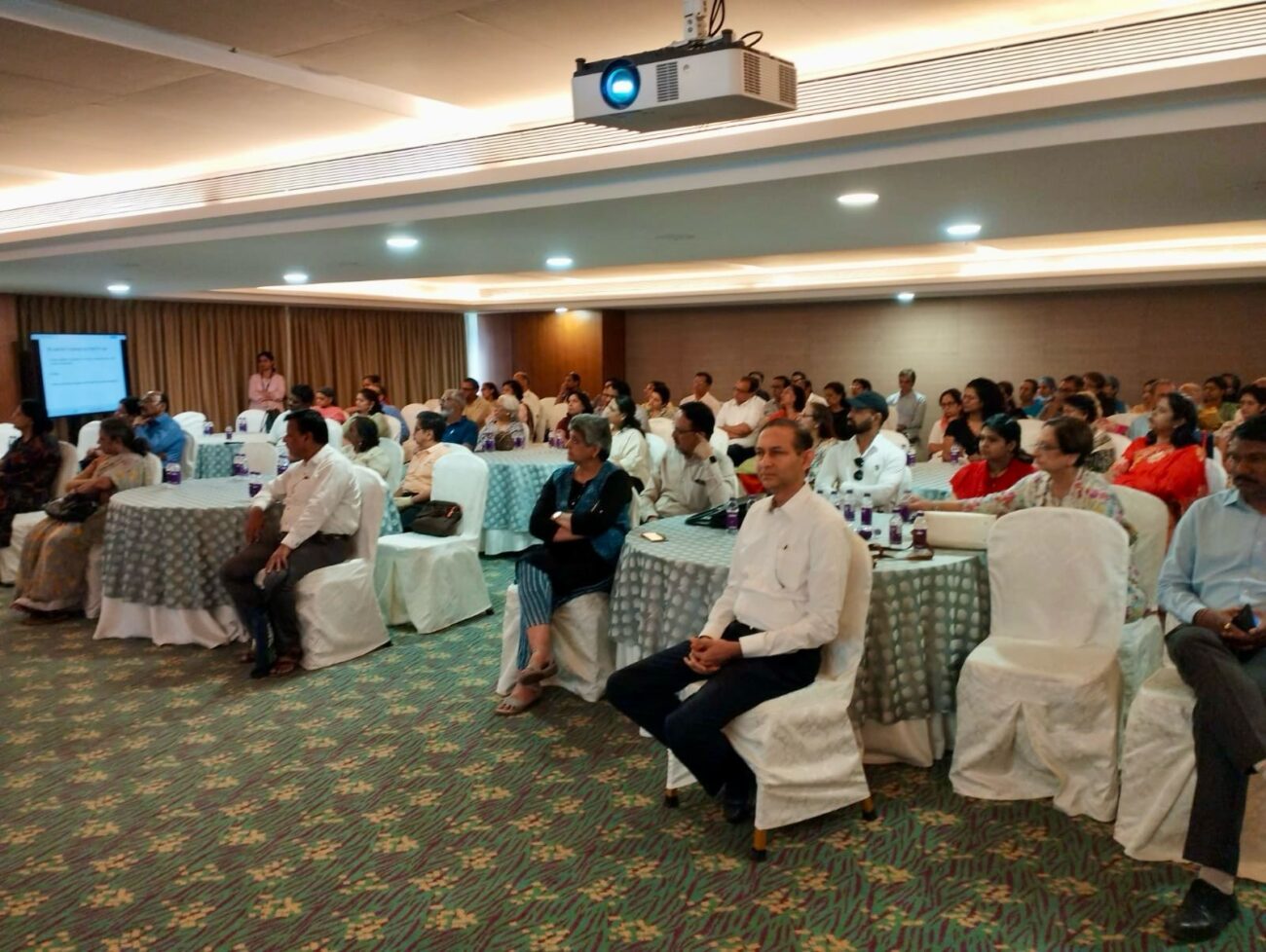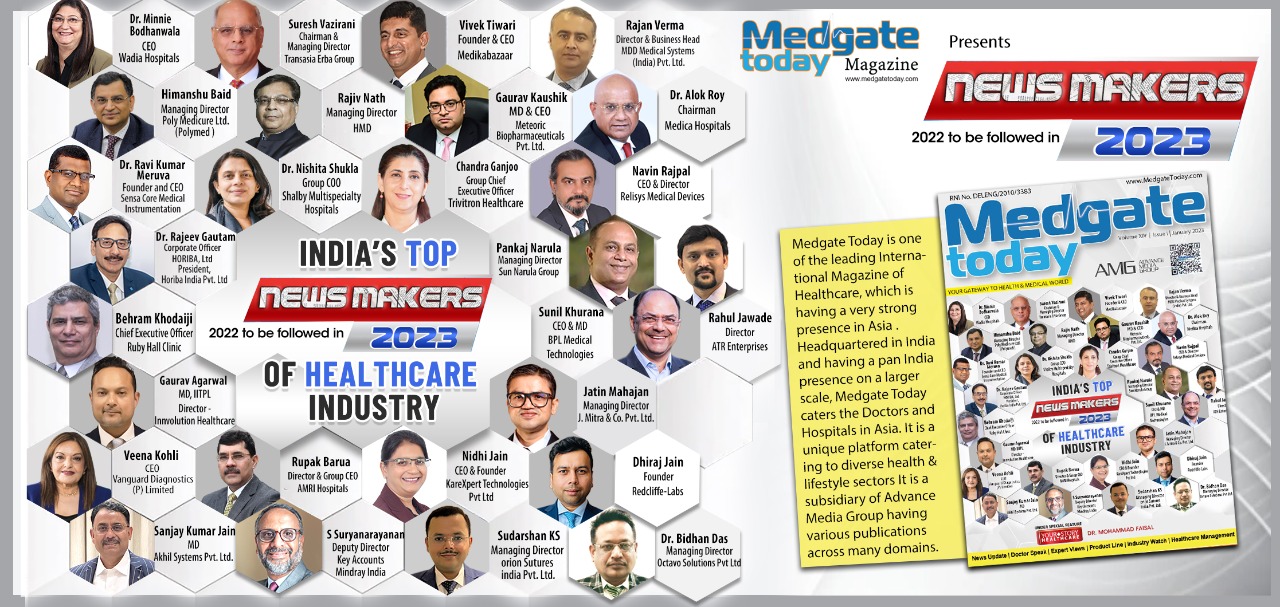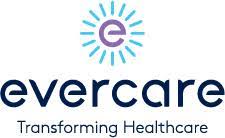MEDICA 2018 presents the future of medicine – completely digital, yet with a human touch
How smart use of data is revolutionising the healthcare industry Artificial intelligence, Big Data or IoT (Internet of Things) – we would be hard pressed to find a sector that doesn’t have these terms and the
How smart use of data is revolutionising the healthcare industry
Artificial intelligence, Big Data or IoT (Internet of Things) – we would be hard pressed to find a sector that doesn’t have these terms and the corresponding application options at the top of its agenda. Health economy is no exception, as will once again be apparent at MEDICA in Düsseldorf in November. With over 5,000 exhibitors from 70 countries, MEDICA is the world’s leading medical fair trade and will run from 12 to 15 November 2018. “Digital transformation is the key topic and we will be looking at it from various angles in our accompanying conferences as well as in the integrated forums, which are tailored to target groups,” explains Horst Giesen, Global Portfolio Director Health & Medical Technologies at Messe Düsseldorf GmbH, with an eye on the MEDICA HEALTH IT FORUM and the MEDICA CONNECTED HEALTHCARE FORUM (including the MEDICA App COMPETITION). These forums alone drew more than 8,000 visitors to Hall 15 at the Düsseldorf exhibition centre in the previous year.
The discussions, presentations and speeches in these forums will focus on essential digitalization and IT trends such as opportunities to implement artificial intelligence, Big Data analysis via algorithms or cyber security measures. Equally, innovative products and technology will be presented, from the wearable technologies, telehealth and robotics and apps sectors, to name a few.
At the MEDICA HEALTH IT FORUM, big data and artificial intelligence are part of the programme from day one – quite literally, on Monday 12 November between 11 a.m. and 2 p.m. Here, the focus lies on artificial intelligence at smart hospitals, from deep learning to process automation, but also in extended patient files.
Interested visitors can also get the whole scoop on artificial intelligence, IoT and Big Data on Tuesday 13 November from 11 a.m. to 1 p.m. at the MEDICA CONNECTED HEALTHCARE FORUM.
Here, IBM Watson Health will illustrate the progress in precision medicine using oncology as an example. Mateij Adam, IBM Watson Health, will explain how artificial intelligence supports this.
When man and machine become one
CorTec Neuro specialises in the interface between man and machine. “CorTec Brain Interchange ONE” connects the nervous system and artificial intelligence. This system can be completely implanted to record and stimulate on 32 channels and enables interaction with the nervous system in open and closed loop applications. This means it can primarily be used to battle neurological diseases and their symptoms, such as epilepsy and paralytic diseases. On Tuesday 13 November, Dr. Fabian Kohler from CorTec will explain the implanted brain-computer interface for researching closed loop therapy at the MEDICA CONNECTED HEALTHCARE FORUM.
Neurostimulation and robotics will then be on the forum’s agenda on Wednesday November 14 from 11 a.m. to 12.30 p.m. Here, our speaker is Prof. Arndt Schilling from the clinic for trauma surgery, orthopaedics and plastic surgery at the University Medical Center Göttingen. With a smooth transition he will lead us to robotics. For him, a typical example of intelligent prosthetics are the “mind-controlled” prosthetics. They pick up nerve signals, derive actions from them such as “open prosthetic hand” and carry them out. The biggest challenge here is to reliably interpret the patient’s intentions. Schilling explains, “Thoughts will always be free and are therefore extremely hard to trap in algorithms. And it is also sometimes difficult for developers to understand the patient’s complex, changed everyday situation, especially because the developers generally do not have prosthetics themselves.” To be able to adapt intelligent controls to the patient’s needs, extremely close cooperation in an inter-professional team of patients, doctors and engineers is therefore necessary.
Prosthetics learn how to live with the patient, not the other way around
Machine learning can help in developing such prosthetics and orthotics. Until now, conventional controls meant that patients had to train for a long time before they learned how to carry out movements in a way the prosthetics could understand, says Schilling. He explains, “Machine learning enables patients to carry out movements in ways that make the most sense to them, and the prosthetics train themselves to understand the patient.” Machine learning reverses the teacher-pupil-relationship between patient and prosthetic, so to speak. “This gives patients the pleasant feeling of the prosthetics serving them and not the other way round,” says Schilling.
Combining machine learning with extended sensors could also give prosthetics a basic understanding of their surroundings. Schilling explains, “In our InoPro project we are working on prosthetics that can recognise whether the patient is reaching for a glass or a pencil, for example, and prepares the hand’s position and grip accordingly, which in turn relieves the patient.”
Today, first prosthetics have been equipped with relatively limited intelligence that allows them to adapt mechanics to the respective gait phase or regulate the speed at which an object is reached for. “The first start-ups are looking into this subject and I expect similarly quick progress to that of voice control in the past years,” says Schilling.
The fundamental technical difficulty is due to the fact that the natural human motor system is so amazingly well-engineered. “Trying to develop something that is even remotely like a hand or a foot is automatically high tech.” Intelligent prosthetics not only have to be smart, they also have to be robust, light and waterproof. Ideally, they should also require very little power, so that they do not have to be recharged all the time. The sensors need to work reliably, no matter whether the wearer is moving, freezing cold, or sweating. This requires biocompatibility of the used materials and the surface of the body.
Ethical border case: Does everyone have a right to high tech?
Currently, Schilling primarily sees an ethical border in the discussion on who should be given access to these modern aids, and who shouldn’t, as high tech is of course very expensive. “Does everyone have the right to be provided with state-of-the-art prosthetics, should the need arise? Which standard will supportive society accept? How much do we want to invest in further development? How can we ensure that people outside of our supportive society benefit from these developments?” Schilling believes the answers to these ethical societal questions will fundamentally determine future developments in this field.
Exoskeletons, for example, are already a reality and part of the field of wearables. The EksoGT robot exoskeleton is the first commercial robot exoskeleton to be approved for use by the American Food and Drug Administration FDA in cases of hemiplegia caused by strokes and for injuries to the spine at the height of T4 to L5 and C7 to T3.
On Wednesday 14 November, the Fraunhofer IGD will vividly demonstrate how augmented reality is moving into operating theatres at the MEDICA CONNECTED HEALTHCARE FORUM. Apart from that, the forum’s daily MEDICA DISRUPT sessions are dedicated to fascinating product innovations. Here, over fifty start-ups will present medical solutions, daily from 1 p.m. to 2 p.m. On Wednesday 14 November, MEDICA DISRUPT will start at noon, as a particular highlight will take place from 1 p.m to 5 p.m. The finalists in this year’s MEDICA App COMPETITION will take the stage to present their solutions and the winner of the “World’s Best Health App” will be announced.





